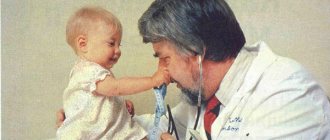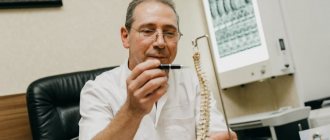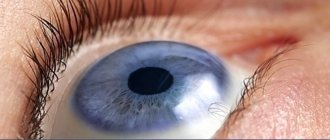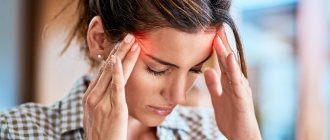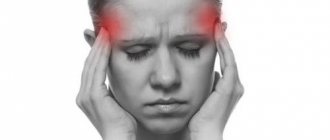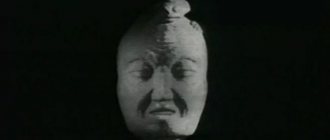To make an appointment with a doctor
Calling a pediatrician to your home
Our doctors
Our prices
March 12, 2021
Each of us, more than once in our lives, has experienced the sensation of imaginary rotation of space around ourselves or ourselves in space, that is, we have experienced dizziness. It is not a separate disease, but can be a sign of a number of quite serious diagnoses. Medical statistics claim that in terms of prevalence, this symptom ranks second in neurology after headache.
Dizziness can be systemic, when the sensation of rotating space seems very realistic and intense, and non-systemic, when there is a feeling of uncertainty, unsteadiness, loss of balance during movement, fear of loss of consciousness.
The main cause of dizziness is a failure in the coordinated functioning of the visual, proprioceptive systems and vestibular apparatus. It can be caused by various factors. Both adults and children suffer from dizziness, and they occur much more often than is commonly believed. Diagnosing dizziness due to the subjective nature of the sensations is not easy. This is even more difficult to do with children, because it is difficult for them to explain what is happening to them. And a very young child is not able to complain of dizziness at all. But it is extremely important for parents to notice this phenomenon in time in order to exclude a serious illness.
How can you tell if your child is dizzy?
You can assume that a small child is dizzy based on his behavior:
- suddenly he is distracted from his favorite activity, he looks confused and incomprehensible, he tries to focus his gaze on some point, but he fails;
- closes eyes and/or lies face down; intuitively presses against the wall, headboard, chair, trying to stay on his feet, afraid to make a movement;
- does not want to get out of bed, especially after illness;
- Sometimes nystagmus is observed - rapid movement of the eyeballs, which is involuntary.
Causes of dizziness in children
Dizziness in children can be one of the symptoms of an incipient illness. However, it is also caused by reasons not related to the painful condition. Among them:
- staying in a stuffy room, lack of oxygen;
- excitement and stress, hormonal processes in adolescence;
- high ambient temperature;
- motion sickness in transport;
- feeling of hunger, decreased blood pressure.
Isolated cases, after which the child quickly returns to normal, do not require a visit to the doctor. But frequent dizziness in a child for no apparent reason may indicate serious health problems. Among them:
- neuroses and other mental pathologies;
- lesions of the central nervous system, epilepsy and other neurotic diseases;
- various inflammatory processes;
- disturbances in the activity of the vestibular apparatus;
- infectious diseases;
- migraine;
- decreased hemoglobin level, anemia;
- diseases of the inner and middle ear;
- head injuries, concussion;
- brain tumors;
- helminthiasis, poisoning, allergies.
It is very important to determine in time why a child is experiencing dizziness in order to prevent the progression of serious illnesses.
Tension headaches in children
Academician of the Russian Academy of Medical Sciences, Professor Ivashkin V.T.: – We very smoothly moved from acute or stress insomnia to tension headaches in children, since Andrei Sergeevich Petrukhin had already introduced himself in the discussion. Please, Andrey Sergeevich.
Professor Petrukhin A.S.: – It must be said that there are three problems regarding headaches in children, despite the fact that in the 21st century neurology has achieved such success that, unlike those sciences that existed before, which said that the etiology is unknown, the pathogenesis is unclear, and there is no specific treatment. Now in neurology, almost one hundred percent diagnosis can be established using various research methods. But there remain three problems that are vague. They are still unclear and very difficult to diagnose and understand. And in particular these are headaches, dizziness and tics. There is a lot that is still unclear here. And it must be said that the headaches section is a section that is not based on any physical research methods, most often visualization ones. They serve, rather, to exclude and confirm the symptomatic nature of headaches. That is, a disease is, say, a brain tumor or an aneurysm, which manifests itself as headaches. Here we are now taking this section - only pure headaches.
In general, pain in children occurs in a special way. And there is an ancient Greek saying that pain is the watchdog of health. But our outstanding scientist, a physiologist who studied pain, said the following phrase: health lies in the physiological muteness of the internal organs. Here’s from Romain Rolland: “An adult, when he suffers, can reduce his pain by mentally placing it in a certain part of his body, as if fencing himself off from it, defining boundaries. But the child does not have this deceptive means. His first encounter with pain is more tragic and deeper. It seems to him limitless, like his very existence.” Therefore, headaches, one can only imagine what kind of suffering a child is often exposed to.
And this slide shows those pains that do not have any pathological influence and which are normally observed in children. These are stomach pains. These are “growing” pains in the bones, when a child cries and complains in the morning, he, as a rule, even points with his hand to the zones of the metaphysis of the bones, the transition zones, where the bone growth zone is: this is the ankle, under the knee. These are pains that go away with growth and do not require any treatment. And 15-20% of headaches are also physiological. They occur because the growth and lengthening of blood vessels is not consistent. Such hemodynamic age-related physiological changes occur. There is no need to attach importance to this and they, as a rule, go away with age and do not require specific treatment. But it must be said that, of course, when a child complains, one cannot help but attach importance to this, because the child does not have social experience, so he cannot feign any pain. Especially frequent headaches reduce his quality of life, affect mental and physical abilities, and disrupt relationships with adults and peers.
And headache (definition) is pain and discomfort localized in the head area. These sensations are always subjective. Therefore, anamnesis plays a very important role in diagnosing headaches, a very detailed anamnesis: when it occurs, where it occurs in the head, how long they last, with what intensity.
Here is the international classification of headaches. These include migraines, tension headaches, cluster (or cluster) headaches, that is, chronic paroxysmal hemicrania, and this also includes Horton's syndrome, which subsequently leads to narrowing of the palpebral fissure, development of blepharophimosis, and constant lacrimation. And various headaches not associated with structural damage, but associated either with trauma, vascular disorders, intracranial processes, not of a vascular nature, for example, the residual phenomenon of some inflammatory processes; associated with the use of chemicals or psychoactive substances, which is very important now, because you can fight and fight, and then in the end you find out that the child smokes marijuana or takes drugs that cause headaches. Headaches associated with metabolic disorders. And facial pain due to pathologies of the skull, neck, eyes, ears, paranasal sinuses, from teeth or diseases of the oral cavity or other structures of the face and skull. As well as cranial neuralgia, pain in the nerve trunks and referred headaches. This is what we mean called the Ged or Zakharyin-Ged zone. And Zakharyin described it, and for the first time the English doctor Ged described it. And he wasn't even a doctor. He was a physiologist. For liver disease, this is the crown; for the lower lobe of the lungs, this is the parietal region. Such hyperpathic sensations in the head. Well, there are in other structures.
Here the reasons are shown, and note that the primary headache is 92%, of which 54% are tension headaches. And migraine takes up 38%. Migraine, as a rule, is, firstly, a hereditary disease. It is transmitted through the maternal line; as a rule, the headache is more intense for the mother and is usually more intense for the son. And the phenomenon of anticipation is also present, although migraine is not a disease of gene expansion. But the earlier and stronger the headaches, the earlier and more severe the headaches occur in the child. And boys suffer more.
And among schoolchildren aged 7-16 years, 39% of children complain of headaches, and 52% are children aged 10 to 12 years. And migraine is observed in 21%, and tension headaches - almost 80%.
Headaches are caused by irritation of intracranial or extracranial receptors, sensory branches of the cranial nerves and the first three cervical roots of the spinal cord. The pathogenesis is different. Extracranial pain receptors are located in the skin, subcutaneous tissues, muscles, tendons, tendon helmet (in the aponeurosis), vessels of the soft integument of the head, in the periosteum of the skull, the oral and nasal cavities, and the muscles of the nose and middle ear. And intracranial receptors are located, firstly, in the membranes. The brain itself is painless, you can scoop it out with a spoon and it does not respond in any way. There were even cases during the war of wounded people picking out their brains with their fingers. Well, the dura mater, and the sinuses especially, are equipped with very dense pain receptors. And also the arteries themselves, like the heart; by the way, the muscle itself is painless during a heart attack, but the vessel hurts. And these pains are caused by irritation of vascular receptors in the meningeal arteries, in the dura mater of the sickle and tentorium. Especially in the area of the tentorium: there are terrible headaches, and, as a rule, they are combined with meningeal symptoms: neck muscle tension, Kernig’s sign, and so on.
Here, much attention is paid to complaints: the duration of occurrence, frequency, localization, irradiation (where these pains spread, where they radiate), nature, duration, beginning and end, provocation, precursors, accompanying symptoms, the presence of chronic diseases. For migraines, for example, there are very important provoking factors. These are the smells of perfume or tobacco, or certain floral smells. Frequency: it is paroxysmal, develops extensively, that is, from low to peak, and ends, as a rule, with vomiting. And vomiting brings relief, by the way. Consciousness, intelligence, mood, blood pressure, muscle tension (pericranial, upper shoulder girdle), neurological edema, presence of meningeal or focal symptoms. For example, with Horton's syndrome (tufted), it is important to identify swelling and hyperesthesia of the skin. And with tension headaches, this is tension in the scalp muscles associated with mood.
Therefore, the first and still considered classical approaches for the treatment of tension headaches are approaches with the prescription of antidepressants, because this is often combined with depression and mood disorders. Therefore, they often occur in women. But among children - girls suffer more often - they are very responsible ones, who are waiting for some kind of trouble, a catch, failure in answering at school, who are bullied by their peers, which is repeated. And for some reason this system is misanthropic in our country. Once upon a time it developed in schools and the class struggle degenerated into a struggle with each other. Now we have a very difficult situation at school. And we will have to approach this at some point. And here additional methods, as I told you, they cannot determine what kind of headache it is. They can only allow us to exclude tumors: this is when there is swelling in the fundus, vasodilation, venous stagnation. X-ray of the paranasal sinuses can reveal an inflammatory disease. Blood tests suggest that this headache may be a symptom of rheumatic or some other process, and CT and magnetic resonance imaging can detect some intracranial processes, tumors, and can also detect vascular and malformations.
And so I had a completely wild case. I gave a forensic medical report on the medical history. In one of the regions close to Moscow, where a girl was treated for headaches for a long time and was even diagnosed with epilepsy, which was not the case, and she died suddenly at home. Moreover, she had a heart defect. And, of course, this disturbance of blood circulation, disturbance of blood oxygenation, of course, led to the occurrence of chronic headaches. Therefore, a pediatrician must know neurology, at least the basics, and a neurologist must know the basics of pediatrics.
Clinical manifestation of headaches. The child is less active, capricious, easily irritable, puts his head on the sofa, on his side in bed. Forced position of the head means you need to think more about the tumor. Children often hold their hand on the sore spot, clearly show the place where the headache hurts and stroke the corresponding part of the head, pull their hair, and if you touch the hair yourself, you can find points of hyperesthesia. Older children keep their heads still; instead of turning their heads, they turn their whole body, with their whole body. And now children from two years old even indicate where their head hurts, and children from 6-7 years old describe the sensations in detail.
And here are the phenomena of headaches in young children according to Hurthl. This is facial expressions: a serious facial expression, eyebrows knitted, a bitten or twisted mouth. Pantomime: trembling or unusual position of the head, pressing on a sore spot, biting a finger, lip, grinding teeth. Vegetative symptom: pallor or redness of the face, cold fingers, cold sweat, goose bumps. Also auditory: persistent screaming, crying, sobbing and suppressed coughing. And in particular behavior: decreased activity and interests, increased irritability, aggressiveness and loss of appetite. Vomiting can occur in children.
Migraine - I have already said - is a paroxysmal condition, manifested by attacks, mainly in the orbital-fronto-temporal region, or less often bilateral localization: in the forehead and occiput. Attacks of vomiting, accompanied by nausea, photophobia. The recurrence of the attack and hereditary predisposition are characteristic.
Migraine - the prevalence is 12-15% of the population, children under six years old suffer from migraine in one percent of cases, at the age of 10-12 years - 4.5%, and from 15 years old - 5.3%. Up to the age of six, it is more common in boys, at the age of 7-11 equally in both boys and girls, and after 18 years in boys, attacks regress and long-term remissions are noted.
Tension headaches are actually the topic we moved on to. Occurs in children in 70-80% of all cases of headache. Emotional stress associated with studying, excessive workload with additional activities, uncomfortable work place, eye strain, family conflicts, excessive parental care, lack of physical activity or excessive physical activity. These pains can usually occur after a long period of stress. Here the pathogenetic feature is the immaturity of the child’s psychological defense mechanisms, which causes the appearance of the disease under minor, from the point of view of adults, stress. Tension headaches often occur in children who are shy, dissatisfied with themselves, and poorly adapt to a new environment. They experience outbursts of stubbornness and whims, which are in the nature of defensive reactions against the background of dissatisfaction with themselves.
For some reason, the parents themselves don’t work ten jobs, but in our country it’s typical that a child has to play music, sports, take additional foreign language classes, and sit another eight hours at school. And they don’t get any smarter. I haven’t seen either the Pushkins or the Dostoevskys lately.
Recently, such works have appeared - and there are already quite a large number of them - on the role of magnesium in the pathogenesis of tension headaches. Magnesium is an intracellular ion that is not observed in free form. Therefore it is very difficult to research. And low magnesium levels are important in the pathogenesis of headaches, as well as seizures in newborns. Low serum magnesium levels are observed in patients with tension headaches and migraines in the interictal period. Studies have reported the positive effects of magnesium supplementation in patients with different types of headaches. Well, this is an article that shows the role magnesium plays in muscle tone and helmet tension. Here are the types of tension headaches: infrequent episodic, frequent episodic, chronic headaches with tension of the pericranial muscles and chronic headaches without tension of the pericranial muscles.
Tension headaches in children are characterized by: bilateral pain in the frontotemporal or frontoparietal regions, sometimes with a feeling of pressure on the eyes. The pain can be constricting, squeezing, like a helmet, pressing in nature, and not intensify from physical activity. Associated symptoms: sound fear, photophobia, nausea, increased pain when touching the scalp and hair, sleep disturbance. They stop on their own or when falling asleep. Children after seven years old can talk about their feelings. With long-term chronic tension headaches, if girls run in high-heeled shoes, they feel a sensation in the head, because prolonged tension of the scalp causes a violation of the venous outflow from the cranial cavity and then such dyshemia occurs - this is an overflow of the venous sinuses, and then are also head receptors. And such a severe headache appears.
For headaches, magnesium preparations are used and can be used as ex juvantibus therapy, because magnesium cannot be overdosed. The more you introduce it, it will simply be eliminated; it will no longer enter the cell. And vitamins, also non-steroidal anti-inflammatory drugs; in more severe cases and chronic headaches, magnesium preparations are combined with psychotropic drugs, such as the anti-anxiety drug atarax; and antidepressants, usually recently; Well, tricyclics can be used, but they are still a bit heavy. And we have a big problem with serotonin reuptake inhibitors, because of all of them, perhaps, only Zoloft is approved for children over the age of six. And in younger children it is even worse that we cannot use these drugs, so it is recommended (today the previous lecturer was asked a question) here is Teralen, French. Unfortunately, we don’t supply it in drops, apparently because it’s very cheap. And Teraligen is difficult to dose because it comes in tablets. Phenibut is also a drug, the only nootropic drug that reduces tone and which calms. And the combination is also with bellataminal, an ancient drug. There is no need to joke or smile here. The fact is that belladonna, according to the principle of evidence-based medicine, is one of the few drugs that, according to the criteria of evidence-based medicine, work effectively.
Well, dosage forms of magnesium. There are ampoules and tablets that contain 470 milligrams of magnesium lactate in each tablet. And there are also ampoules of magnesium citrate, magnesium citrate is also available in tablets, containing approximately 100 milligrams of magnesium.
Non-drug treatment of headaches. It is very important not only to examine the child, but also to find out the family situation. As with tics and tension headaches, especially find out what the situation is in the family. Of course, the parents won’t tell, and we can’t be in their house to find out what the situation is like there. This is the principle of such declarative education: where did you sit, why did you stand up, why are you standing like that, not like that. The child cannot answer, but internally he is all collected and tense from such boorish and rude upbringing. And it has long been noticed that the declarative principle of education is absolutely ineffective. An example of our society is that for 73 years we were educated in party committees, we went through the school of Marxism and Leninism. As soon as it happened, everyone immediately ran away and everyone forgot about communism. Eliminating family traumatic factors is the first important step that must be taken, because you can treat with medications as much as you like, but if there is an abnormal environment at home, there will be no effective therapy. Maintaining a daily routine with sufficient sleep, walks in the air, a combination of mental work with physical activity, water procedures, a contrast shower after school, a warm shower, a bath, swimming in the pool, reducing time spent watching TV and computer games, which also lead to excessive mental stress .
Types of dizziness
Depending on the duration and frequency of occurrence, such unpleasant conditions in children are:
- one-time, acute;
- regular (periodic);
- permanent.
Sometimes they are accompanied by migraines.
In addition, dizziness of various natures is distinguished:
- psychogenic (occur under strong emotional stress, fatigue, neuroses and mental pathologies);
- associated with brain pathologies (brain tumors, head injuries, cervical spine injuries, concussions and disorders of the blood supply to the brain, autonomic disorders, intoxication with chemicals or drugs);
- ocular in nature (noted in completely healthy children due to visual stimulation, when they have to look at fast moving objects, as well as in pathologies of the eye muscles, when the projection of objects onto the retina is disrupted);
- associated with ear diseases (due to malfunctions of the vestibular apparatus, damage to the nerves and blood vessels of the ear; inflammatory processes).
Kinetosis
Many children and some adults get motion sickness in transport. This phenomenon is called kinetosis and occurs due to irritation of the receptors of the organs of balance and vision due to acceleration of movement or change in body position. The phenomenon can occur due to strong and prolonged swinging on a swing or being on a merry-go-round, during an airplane takeoff, or in a car while accelerating. Its mechanism is not yet fully understood.
The degree of manifestation of kinetosis varies: from weakness, mild nausea and loss of balance to tinnitus, drooling, vomiting, diarrhea, cold sweat, rapid heartbeat, fainting and severe dizziness. Healthy children quickly recover after eliminating the irritant, but if the cardiovascular system is disrupted, chronic diseases can worsen.
Methods for preventing kinetosis:
- do not overload your stomach with food before the trip;
- on the road, consume candies and drinks with a sour taste (preferably water acidified with lemon);
- use special pharmaceutical products for motion sickness;
- in land transport, choose seats closer to the driver, on a ship or on an airplane - in the middle of the cabin;
- while moving, it is better not to look at sharply changing and swaying objects, and also to read, it is better to direct your gaze into the distance;
- the symptoms of kinetosis disappear during sleep, so it is better when the child sleeps on the road.
Content
- Causes of nausea in a child Nausea due to “nerves”
- "Toxic" nausea
- Nausea caused by diseases of the gastrointestinal tract
Situations when a child complains of nausea are not uncommon, especially at an early age. Every parent has encountered this unpleasant phenomenon at least once.
Nausea refers to discomfort in the stomach and epigastric region. The logical conclusion of this condition is vomiting, that is, the “evacuation” of food and bile from the stomach. Usually accompanied by symptoms such as increased salivation, pale skin, decreased temperature and blood pressure, sweating and even fainting. It can be either episodic or permanent (depending on the reasons).
When should you see a doctor?
You should immediately make an appointment with a doctor in cases where dizziness in a child is accompanied by the following symptoms:
- severe headache and cramps;
- sudden deterioration of vision and hearing;
- short-term loss of consciousness;
- rapid movements of the eyeballs (nystagmus);
- tinnitus;
- insomnia.
You cannot do without professional help for headaches and dizziness that occur after head injuries. In this case, the child needs to be put to bed and external stimuli (bright lights, loud music) removed.
Dizziness in a child in the morning after sleep
This type of dizziness often occurs immediately after waking up. It is often accompanied by the appearance of spots or blurred vision, nausea or vomiting. What can cause a child to complain of dizziness and nausea immediately after sleep?
Most often, the causes of regular morning dizziness may be damage to the inner ear or vegetative-vascular dystonia. If we are talking about these pathologies, then dizziness may be accompanied by short-term lightheadedness. Unpleasant symptoms continue for a short time, but then the child feels weak for about two more hours.
Frequent dizziness in a child
– a reason to immediately contact a specialist for help. Only a doctor, having prescribed the necessary studies and tests, can make an accurate diagnosis and treatment.
The specialists of the DiLuch sanatorium have many years of experience in working with all kinds of cases and excellent equipment that allows them to prescribe the correct examination and treatment. The neurological department of the medical center of the sanatorium will help in the fight for the health of the child!
Which specialist should I contact if my child has dizziness?
In all of the above cases, you should visit a pediatrician. We recommend making an appointment with one of the specialists in the pediatric department of JSC “Medicine” (clinic of Academician Roitberg) by telephone 24 hours a day or calling a doctor at home. JSC "Medicine" (academician Roitberg's clinic) is conveniently located in the center of Moscow at 2nd Tverskoy-Yamsky Lane, 10. The medical institution is equipped with modern diagnostic and therapeutic equipment and provides a wide range of services in the field of pediatric medicine. Many problems associated with dizziness are resolved by visiting a pediatrician; sometimes consultation with specialized specialists is required.
If a child experiences short-term loss of consciousness, after an attack of dizziness he does not orient himself in space and time, loses balance and falls with his eyes closed, cannot pick up an object, misses when asked to touch the tip of his nose with a finger, the pediatrician recommends visiting a neurologist. And if you feel dizzy due to tinnitus and impaired coordination of movements, you need the help of an otolaryngologist. Sometimes a consultation with a child psychologist may be required.
Common disorders treated with ART
The most common peripheral vestibular disorders treated with ART are benign paroxysmal positional vertigo (BPPV) and any injury or disease that results in decreased function of the inner ear. This decreased function may be associated with disorders such as Meniere's disease, vestibular neuritis or labyrinthitis, or acoustic neuroma. The term unilateral or bilateral vestibular hypofunction can be used to describe decreased function of the vestibular system in one (unilateral) or both (bilateral) ears due to disease or injury.
Clinically, any peripheral dysfunction in the vestibular system that affects balance can potentially be treated with ART, however the effectiveness of treatment will depend on the exact cause of the vestibular problems.
Central vestibular disorders such as multiple sclerosis or stroke may also respond to ART, although in general peripheral vestibular disorders tend to respond better.
Benign paroxysmal positional vertigo (BPPV)
BPPV is a common clinical balance disorder characterized by recurrent attacks of dizziness that are brief in nature (usually 10-60 seconds) and most often triggered by certain head positions. Benign, in medical terms, means that it is not life-threatening. Paroxysmal means that it occurs with rapid and sudden onset or worsening of symptoms.
BPPV is the most common cause of recurrent dizziness. BPPV is thought to be caused by calcium carbonate crystals (called otoconia, otoliths, or “ear stones”) in the semicircular canals of the inner ear. Under normal circumstances, these crystals are located within the sac of the ear, but in BPPV, these crystals are thought to dislodge and migrate into the semicircular canals of the ear. This misalignment is thought to have a number of possible causes, such as ear or head trauma, ear infection or surgery, or natural degeneration of the inner ear structures. Often, however, the direct cause cannot be identified.
Otoconia settle in one place of the canal when the head is motionless. The most common canal to be affected is the posterior semicircular canal. A sudden change in head position, often caused by actions such as rolling over in bed, getting out of bed, tilting the head, or looking up, causes crystals to shift. This shift, in turn, sends false balance signals to the brain and causes dizziness.
Dizziness due to BPPV can be severe and accompanied by nausea. The attacks may occur for seemingly no reason and then disappear for several weeks or months before returning again. BPPV usually affects only one ear, and although it can occur at any age, it is often seen in patients over 60 years of age and is more common in women. Nystagmus is usually present.
Meniere's disease
Meniere's disease is a chronic, incurable vestibular disorder characterized by symptoms of episodic severe dizziness, fluctuating hearing loss, ear fullness and/or ringing in the ear (tinnitus), and nystagmus.
This disease gets its name from the French physician Prosper HaMeniere, who in the late 1800s theorized the cause of these symptoms, which he noted in many of his patients.
The exact cause of Meniere's disease has not yet been determined, but it is thought to be due to an abnormal amount of endolymphatic fluid accumulating in the inner ear and/or an abnormal accumulation of potassium in the inner ear.
The early stages of acute attacks of Meniere's disease vary in length from 20 minutes to 24 hours. The attacks may occur regularly over the course of a week or may occur weeks or months later. Other symptoms may coincide with an attack, such as restlessness, diarrhea, shaking, blurred vision, nausea and vomiting, cold sweats, and a rapid pulse or racing heart. After attacks, patients often experience extreme fatigue that requires many hours of rest to recover. For some patients, the time between attacks may be symptom-free, but other patients report persistent associated symptoms even between attacks.
Vestibular neuronitis
Vestibular neuronitis is an inflammation of the inner ear or its associated nerve (the vestibular portion of the vestibulocochlear nerve) that causes dizziness. Hearing may also be affected if the inflammation also affects the cochlear nerve.
Dizziness caused by vestibular neuronitis has a sudden onset and can be mild or extremely severe. Nausea, vomiting, unsteadiness, decreased concentration, nystagmus, and blurred vision may also occur. Most often, infections that cause inflammation of the inner ear or vestibulocochlear nerve are viral rather than bacterial. Proper diagnosis as to whether it is viral or bacterial is important to ensure the most effective and appropriate treatment.
Acoustic Neuroma
An acoustic neuroma is a benign tumor on the vestibulocochlear nerve. Early symptoms include hearing loss in the affected ear, ringing in the ear (tinnitus), dizziness, and a feeling of fullness in the ear. The tumor grows slowly, so symptoms appear gradually and can be easily missed in the early stages. As the tumor grows, it can press on other nerves in the area, and symptoms such as a headache or pain and numbness in the face may occur. Dizziness or other balance problems may occur as the tumor grows.
Vestibular symptoms
Peripheral or central vestibular disorders can lead to a number of different symptoms. VRT can potentially relieve or resolve any symptoms associated with a vestibular disorder.
Common symptoms include:
- dizziness
- blurred vision
- fatigue
- anxiety
- headache
- nausea and/or vomiting
- cold sweat
- ringing/tinnitus
- hearing loss
- twitching orbital stagmus
- ear pressure
- panic attacks
- leaning to the side
- fear of falling
- increased risk of falls
- imbalance
- unsteady walk
- anxiety
- depression
Diagnostics
At the appointment, the pediatrician should find out the frequency and duration of dizziness attacks, identify provoking factors, connections with changes in body position, as well as taking medications or exposure to chemicals. It is also important to find out if family members have diseases such as migraines, seizures, pathologies of the endocrine system and kidneys, movement disorders, aura syndromes and ataxia, which may be hereditary. After clarifying the details to clarify the preliminary diagnosis, the doctor sends the small patient for laboratory and (or) instrumental research.
At JSC "Medicine" (academician Roitberg's clinic) they quickly and thoroughly perform various blood tests, ultrasound, x-rays, electrocardiograms and magnetic resonance imaging. You can invite a specialist to your home to collect material for analysis.
Treatment
Treatment of dizziness in children consists of treating the underlying disease that caused this condition. Often medications are prescribed aimed at strengthening the autonomic nervous system: vitamins, drugs that improve blood supply to the brain and dilate blood vessels. Patients are recommended physical therapy and therapeutic exercises to train the vestibular apparatus. At JSC “Medicine” (academician Roitberg’s clinic), specialists conduct physical therapy classes with children. A properly selected set of exercises can solve many health problems at once. Physiotherapeutic treatment is also carried out using modern professional equipment.

